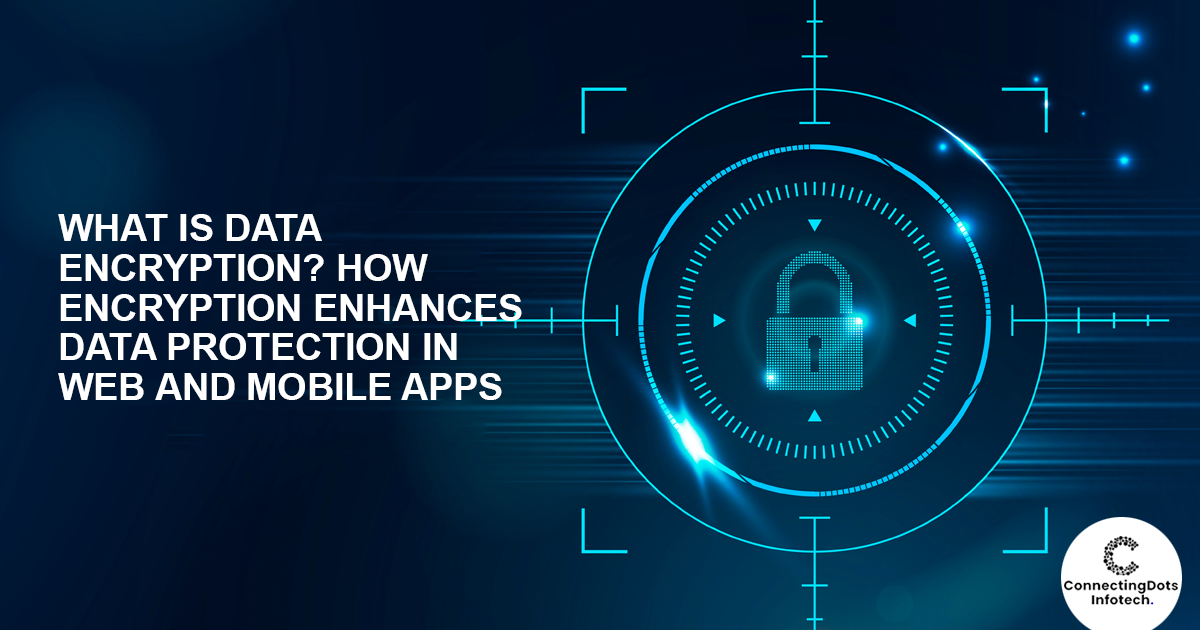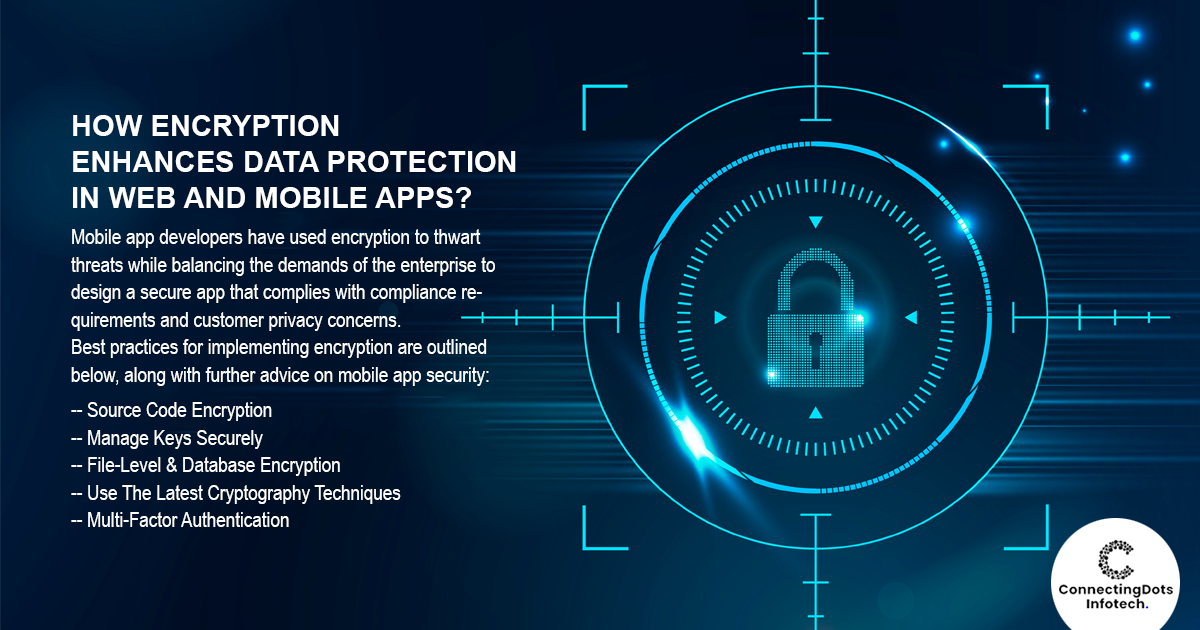What Is Data Encryption? How Encryption Enhances Data Protection in Web & Mobile Apps?

The global epidemic and ongoing digitalization in enterprises have caused considerable growth and changes in mobile use patterns, with mobile traffic currently accounting for over 54 per cent of all website traffic. The demand for a more personalized digital experience among consumers today is what's driving the development of mobile and web apps. Such customization, however, necessitates access to personal data, and security may be disregarded in the race to hasten the time to market for a mobile application or web app.
The process of protecting end-user data from attack, malware, breach, or other modification or loss applies to both mobile and web apps. Data encryption is one of the most important components of mobile and web app security.
What Is Data Encryption?
By encoding data into ciphertext, that can only be decoded with a special decryption key generated at the time of the encryption or earlier, data encryption is a technique for maintaining data confidentiality.
Data encryption changes the original form of the data into a code that can only be accessed with a secret key (formerly known as a decryption key) or password. Data that has been encrypted is known as ciphertext, while data that has not been encrypted is known as plaintext. One of the most popular and effective data protection techniques in use today in businesses is encryption.
The value of encryption as a mechanism for preserving data integrity cannot be emphasized. At some point, almost everything else on the internet was encrypted.
How Encryption Enhances Data Protection in Web and Mobile Apps?
Mobile app developers have used encryption to thwart threats while balancing the demands of the enterprise to design a secure app that complies with compliance requirements and customer privacy concerns.

Best practices for implementing encryption are outlined below, along with further advice on mobile app security:
1. Source Code Encryption
There are two main ways for attackers to attack source code: either they exfiltrate the code to repackage the software (with malware) for new, naive customers, or they inject malware into defects or vulnerabilities in the source code. Making the coding or files/strings in the code unreadable renders them useless to hackers, preventing exfiltration (stealing), manipulation, or compromise of the intellectual property (source code) of the website or mobile application.
2. Manage Keys Securely
Best practices for key management include a number of actions to safeguard the full lifespan of cryptographic keys (creation, exchange, storage, usage, destruction, and replacement); after all, what good is encryption if your keys aren't kept safe?
3. File-Level & Database Encryption
According to research, up to 76 percent of mobile applications store user data insecurely, putting passwords, personal information, and financial data in danger as well as possibly breaking compliance rules. Therefore, it's crucial to make sure that unstructured information stored on the mobile device's local file systems and/or databases is protected from vulnerabilities by encryption.
The purpose of the database and file-level encryption is to both safeguard the data and reduce the appeal of the database by rendering the data worthless to hackers.
4. Use The Latest Cryptography Techniques
As technology advances and fraudsters continue their efforts to "break" existing security measures, the risk environment is continuously changing. Developers must keep up with the latest developments in cryptography and regularly do threat modeling and penetration testing to make sure encryption (and other safeguards) is operating as intended.
Despite the fact that the US government now relies on the trusted standard AES, academics are still working on new and developing standards like ECC (elliptic curve cryptography), which has already been accepted by the NSA for key exchange and digital certificates.
5. Multi-Factor Authentication
Strong multi-factor authentication is essential for both internal users and end-users, especially for those with privileged levels of access. It goes hand in hand with encryption. Pick at least 2 factors of authentication for users, adhering to the "never trust, always verify" principle from the zero trust model. In an ideal world, your app would let users choose from a variety of strong authentication options, including hardware tokens, as well as several ways to authenticate.
Consider better types of authentication that do not depend on legacy authentication (passwords) or mobile devices, but rather employ a hardware token that is phishing-resistant for the most authorized individuals, such as those with admin permissions to edit code or access consumer data.
Conclusion
There is no way to emphasize the importance of encryption. Your data may still be compromised even when it is kept in a common infrastructure. Although there is always a danger that data will be compromised, your data will be significantly safer if it is encrypted.
Think about it this way for a second. Encrypting your data before sending it out will protect it if it is kept in a secure system. Systems that are sanctioned don't offer the same level of security.
What do you think the outcome would be in the actual world? Think about a situation where a user of a company's data has access to private data while at work. Without any encryption, the user is free to store the data on a portable disc and move it wherever they like. If the encryptions are set up in advance, the user can still copy the material, but it won't be understood when they try to see it elsewhere. These are the advantages of data encryption that prove its real worth.
